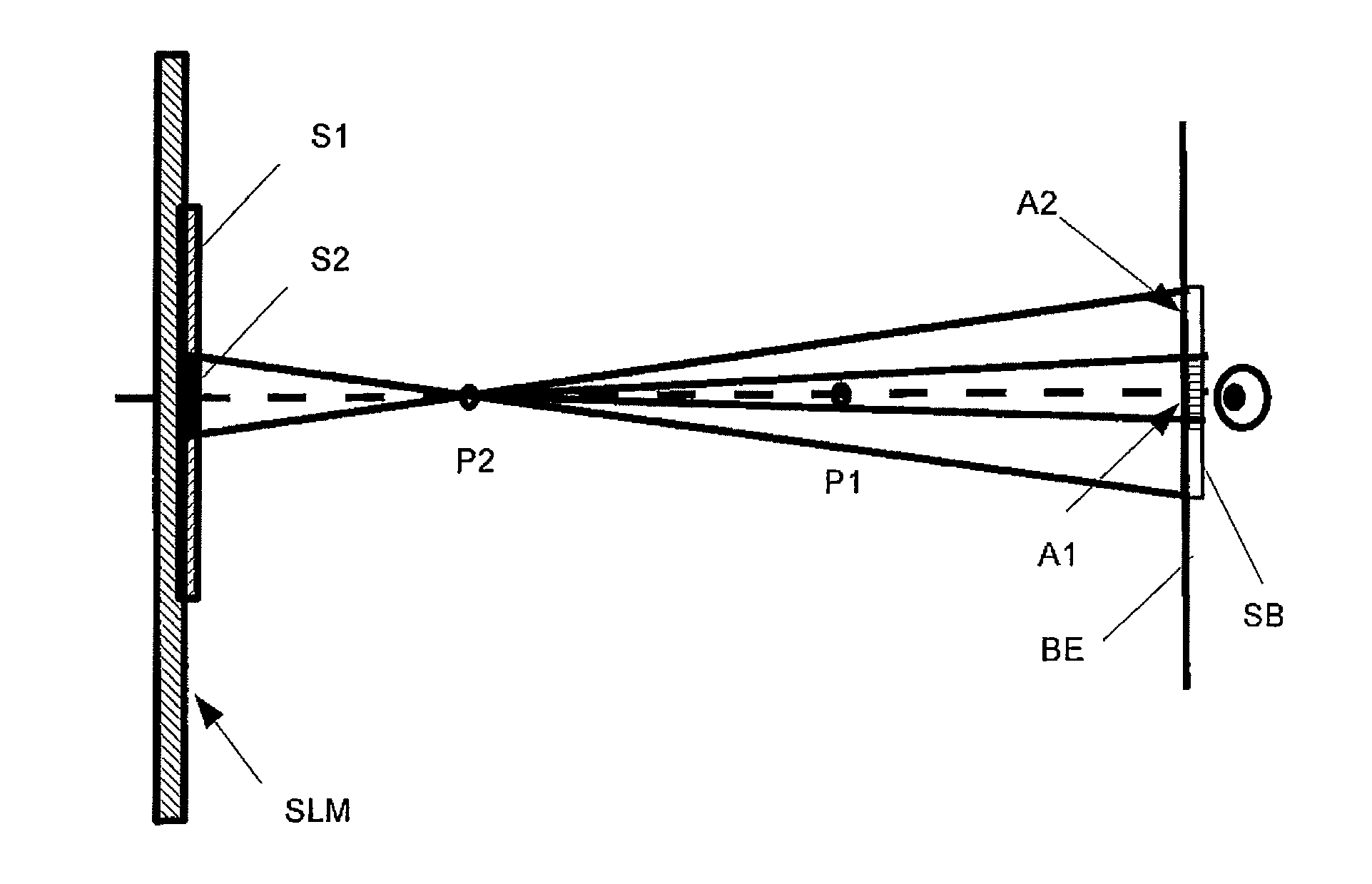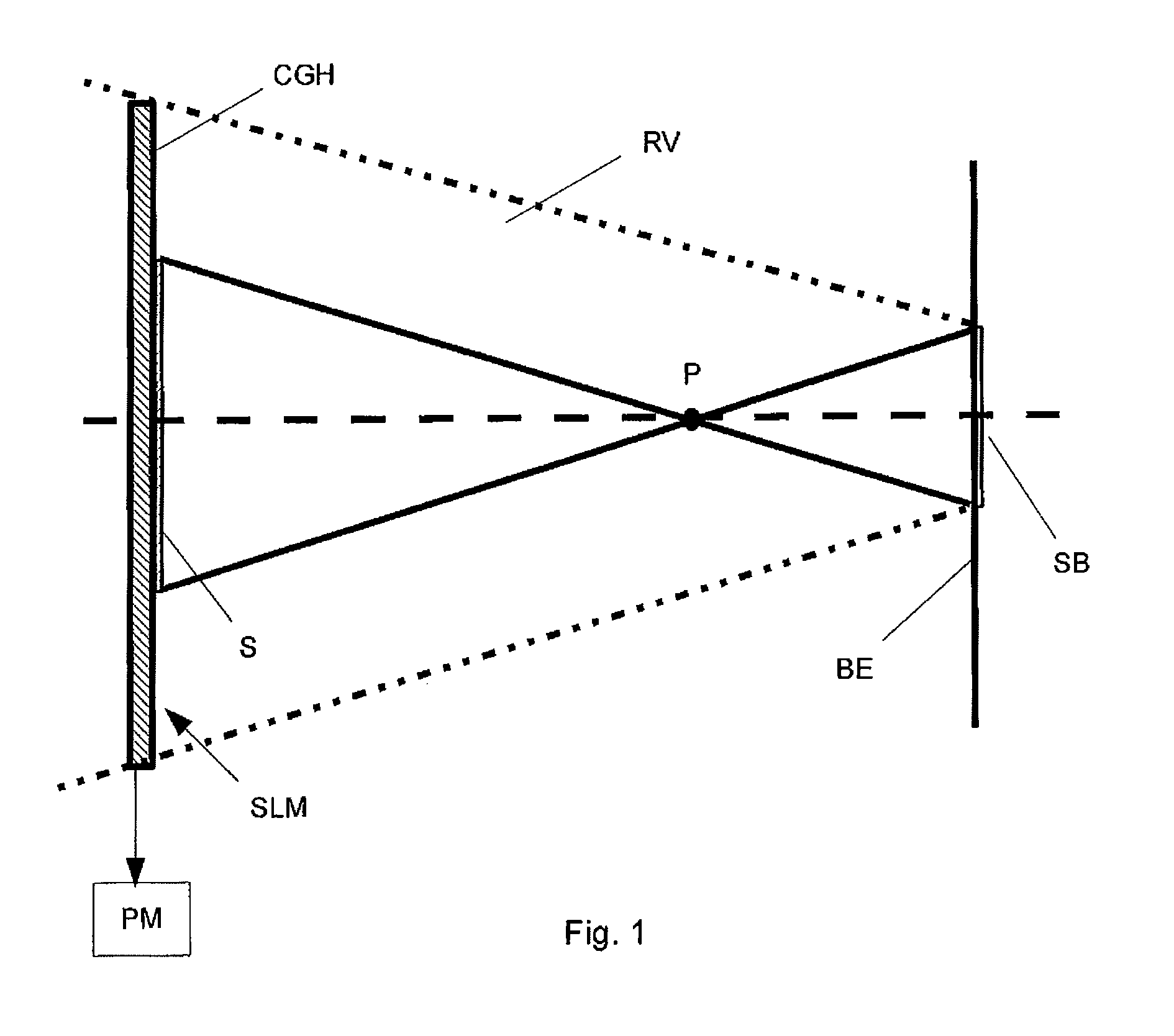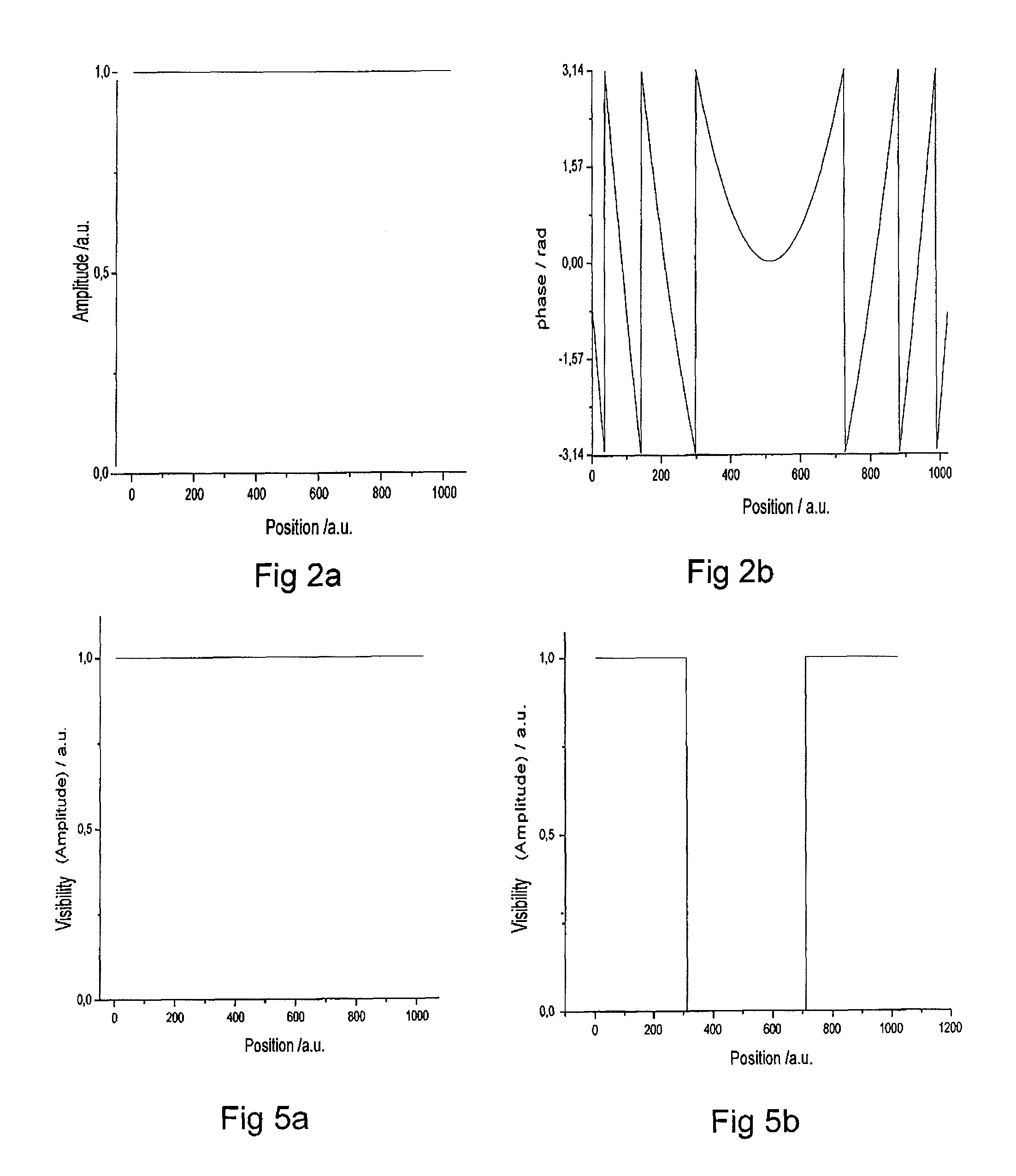Method and device for reconstructing a three-dimensional scene with corrected visibility
a three-dimensional scene and visibility technology, applied in the field of three-dimensional scene reconstruction, can solve the problems of insufficient compliance with requirements and possible reconstruction errors, and achieve the effect of saving computing power and simplifying the method
- Summary
- Abstract
- Description
- Claims
- Application Information
AI Technical Summary
Benefits of technology
Problems solved by technology
Method used
Image
Examples
Embodiment Construction
[0052]It is known from the prior art to separate the 3D scene into section layers which are parallel to the plane of an SLM and to transform all of those section layers into a visibility region SB in the observer plane BE and to add their values there. Then, the 3D scene is computed in the hologram plane by way of another transformation of those aggregated values into the light modulator, and encoded as a CGH on the SLM.
[0053]In contrast, according to the inventive method, the 3D scene is separated into individual object points P; . . . ; Pn, and each individual object point Pn is discretely transformed into the visibility region SB. The transformation of an individual object point Pn initially generates in the visibility region SB a constant intensity and a phase gradient which depends on the position of the object point Pn in the respective section layer, or in the 3D scene. The entire distribution of values in the visibility region SB is found by way of adding the complex values ...
PUM
 Login to View More
Login to View More Abstract
Description
Claims
Application Information
 Login to View More
Login to View More - R&D
- Intellectual Property
- Life Sciences
- Materials
- Tech Scout
- Unparalleled Data Quality
- Higher Quality Content
- 60% Fewer Hallucinations
Browse by: Latest US Patents, China's latest patents, Technical Efficacy Thesaurus, Application Domain, Technology Topic, Popular Technical Reports.
© 2025 PatSnap. All rights reserved.Legal|Privacy policy|Modern Slavery Act Transparency Statement|Sitemap|About US| Contact US: help@patsnap.com



